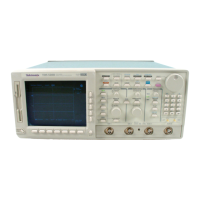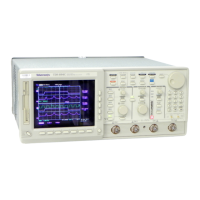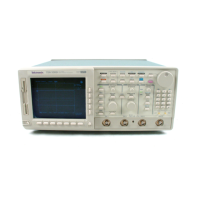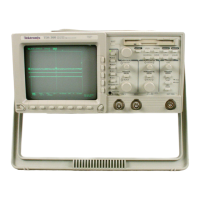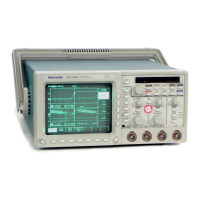Command Descriptions
2–86
TDS Family Oscilloscope Programmer Manual
CURVe?
CURVe
<Space>
?
<asc curve>
<Block>
<Block> is the waveform data in binary format. The waveform is formatted as:
#<x><yyy><data><newline> where <x> is the number of y bytes. For example,
if <yyy> = 500, then <x> = 3. <yyy> is the number of bytes to transfer. If width
is 1 then all bytes on the bus are single data points. If width is 2 then all bytes on
the bus are 2-byte pairs. Use the DATa:WIDth command to set the width. <data>
is the curve data. <newline> is a single byte newline character at the end of the
data. See the GETWFM.C or GETWFM.BAS examples in the accompanying disk for
more specifics.
<asc curve> is the waveform data in ASCII format. The format for ASCII data
is <NR1>[,<NR1>...] where each <NR1> represents a data point.
CURVE?
might return, for ASCII data: CURVE
0,0,0,0,-1,1,0,-1,0,0,-1,0,0,-1,0,-1,
-1,1,0,0,0,-1,0,0,-1,0,1,1,0,-1,0,0,-1,0,0,-1,0,0
Arguments
Examples

